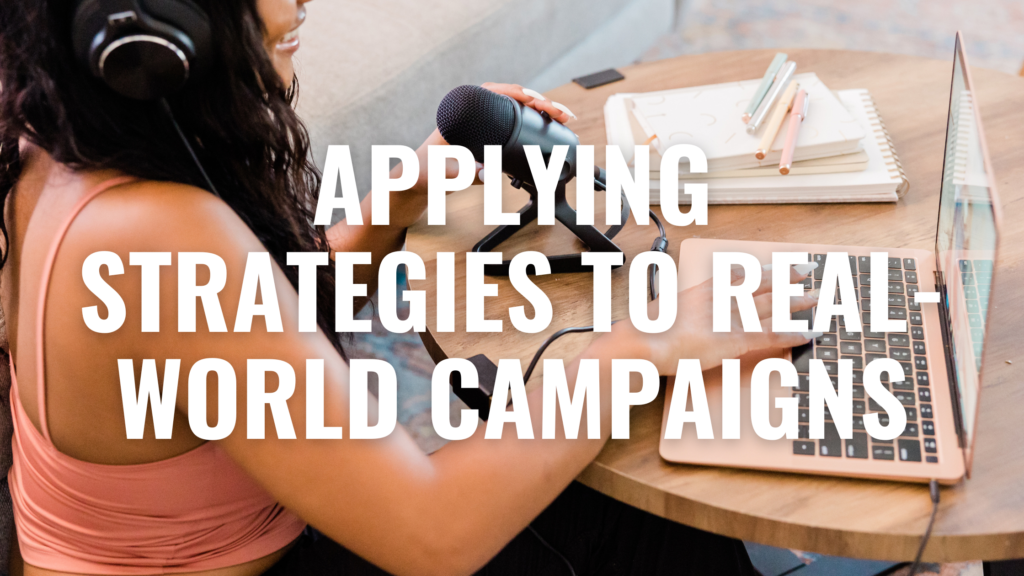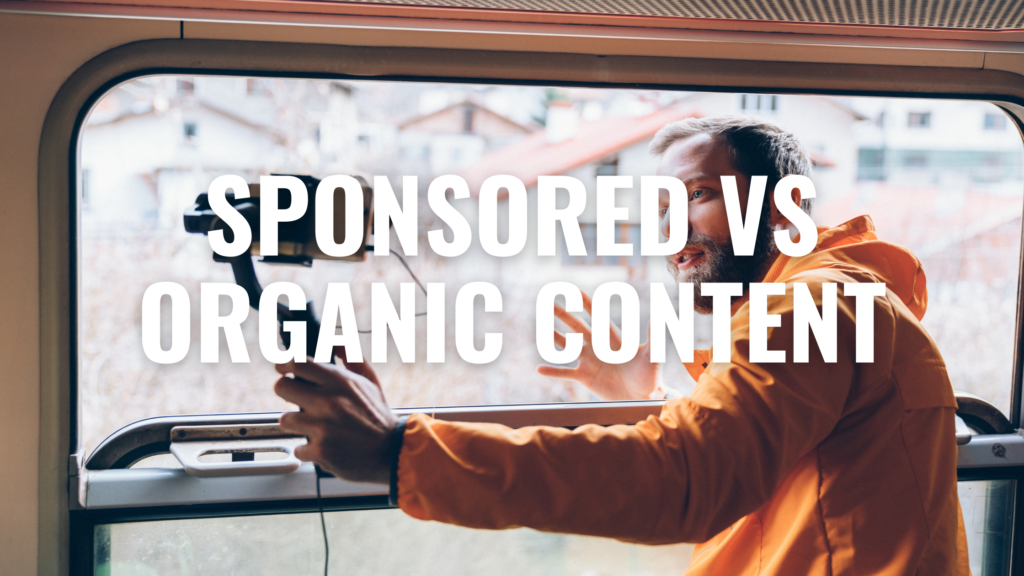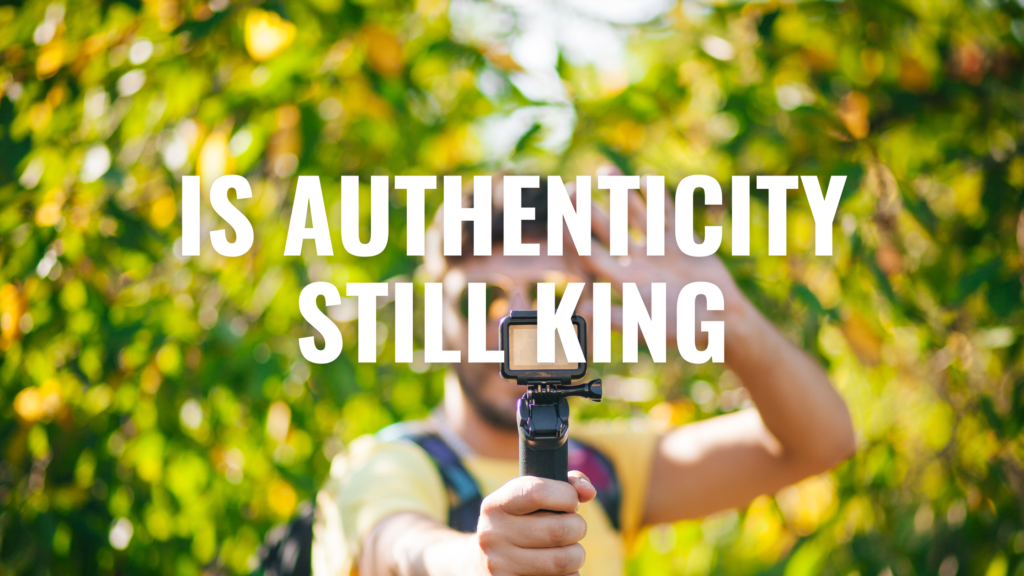In the early days, influencer marketing was more art than science. In some ways, you can say that’s true of all marketing. The best marketing is essentially storytelling – It’s marketing, but it shouldn’t feel like marketing to the consumer. It should feel like a story.
Table of Contents
- Key Objectives Of The Influencer Marketing Study
- Understanding The Predictors and Four Main Theories
- The Four Main Theory Clusters
- Theory Group 1. Social Media Influencer (SMI) Perspective
- Theory Group 2. Consumer Perspective
- Theory Group 3. Congruence Perspective
- Theory Group 4. Persuasion Perspective
- Classification of Predictors For Influencer Success
- Category 1. Who the Influencer Is
- Category 2. What the Influencer Communicates
- Category 3. How the Influencer Communicates
- Outlining What Makes An Influencer Marketing Campaign Successful
- A Look At Past Research That Didn’t Align With Current Findings.
- What Makes Influencer Marketing A Success Is A Complex Mix
- Real World Applications: Better Influencer Selection Strategies
- Choosing the Right Predictors Based on Campaign Goals
- Understanding How Sponsored and Organic Content Differ
- Prioritizing Content Quality Over Quantity
- Should You Rethink The Role of Authenticity
- Addressing Follower Fraud and Fake Engagement
- Final Key Lessons for Marketers
However, underneath that creativity there are still considerable business objectives. Business objectives need to be measured so stakeholders can determine if resources are being properly allocated and delivering a return.
This is mostly done through analytics and metrics while the campaign is running and afterwards. Metrics can be used to determine if the campaign was a success. They can also be used to fine tune campaigns moving forward to avoid any mistakes or shortcomings.
But what about research before the campaign starts? In influencer marketing, this usually means choosing the right influencers to work with a brand. In many cases, this is the most critical aspect that will determine the success of an influencer marketing campaign.
The right influencers will create an environment where your message resonates with consumers who share the same values as your brand. The wrong influencers can make even the most perfectly crafted campaign fall flat as the influencer’s style and audience just isn’t the right fit.
To help bring some science to this art form, business researchers recently examined 93 academic articles and 108 studies. The goal was to see if they could extract common themes or predictors from those studies when it comes to selecting influencers and the effectiveness of influencer marketing campaigns. The result was a research paper outlining their findings along with practical advice for brands and marketers.
Below, we’ll break down this study in simple terms so you can decide if these findings are something that will impact your ongoing social media marketing strategy.
Key Objectives Of The Influencer Marketing Study
The researchers in this specific study looked to address a key challenge in influencer marketing. That challenge was how to select effective social media influencers (SMIs) for brand campaigns. There are several dominant theories for how to best choose an influencer based on the studies they examined. However, these are fragmented and the data surrounding the effectiveness of each approach has not been fully studied.
To overcome this gap in research, the study set out to:
- Provide a comprehensive literature review of existing research on predictors of influencer marketing effectiveness. Examine a sizable number of existing studies to look for trends.
- Develop a unified framework that consolidates multiple theories and identifies key predictors. Attempt to bring together different theories or find overlaps to develop better strategies
- Resolve inconsistencies in prior research regarding key effectiveness measures, such as customer engagement and purchase intention. The belief is that some metrics may not be the best selector when dealing with different kinds of campaigns or marketing goals.
Research Approach & Methodology
To achieve these goals, the researchers conducted both qualitative and quantitative analyses, combining a systematic literature review with a meta-analysis. To put that in simpler terms, a qualitative analysis is essentially looking into non-numerical data within a study. You can think of a qualitative analysis as the “how and why” of something.
A quantitative analysis looks at actual numerical data within a paper or study. For example, exact metrics or other data that provides concrete numbers to start to compare. For example, a percentage rise in engagement would be a quantitative data point.
Below is what the researchers looked at to perform both a qualitative and quantitative analysis for their paper.
- What Literature Did the Researchers Use?
- Reviewed 93 academic articles covering 108 studies from 2000 to 2022.
- Identified 22 theories explaining influencer marketing effectiveness.
- Categorized 56 different predictors that impact influencer success.
- Analyzed seven key dependent measures (e.g., engagement, purchase intention, brand awareness).
- Meta-Analysis
A meta-analysis looks at separate studies that cover a similar area. The goal is to find patterns in the unrelated data and gain more insight than each study has on its own.
In this case, this is what the researchers used:
- A total of 32 studies to assess customer engagement predictors and 48 studies for purchase intention predictors.
- Extracted Pearson’s correlation coefficients to evaluate relationships between variables. Pearson’s correlation is a common statistical tool when comparing studies.
- Applied random effects modeling to account for variations between studies.
- Addressed contradictions in prior findings by statistically verifying which predictors consistently impact marketing success.
Parts of this may seem overly complicated, but these are standard statistical techniques for parsing through data and finding real correlations that are significant and ignoring non-relevant data as outliers or simply “noise”.
What The End Goal Was
- The main goal was to develop a generalized framework that organizes influencer marketing success predictors into three distinct categories:
Those Categories are:
- Who the influencer is (e.g., credibility, attractiveness, expertise).
- What they communicate (e.g., content style, brand congruence).
- How they deliver content (e.g., quality, language, sponsorship disclosure).
The researchers then created 11 predictors for customer engagement and seven predictors for purchase intention.
Depending on the goals of the campaign, the research then put forward actionable strategies to identify the best influencers using the predictors it had found during the meta analysis.
Understanding The Predictors and Four Main Theories

In this section, the researchers describe what they discovered from reviewing the 93 studies on influencer marketing effectiveness. They identified four main theory clusters that explain why some social media influencers (SMIs) are more successful than others. They also pinpointed 56 specific factors (predictors) that influence marketing outcomes, such as customer engagement and purchase intention.
The Four Main Theory Clusters
The researchers grouped the 22 different theories they found into four categories, based on what aspect of influencer marketing they focus on.
Theory Group 1. Social Media Influencer (SMI) Perspective
This group of theories looks at the influencer’s own characteristics and how they impact their marketing effectiveness. The key theories here are:
- Source Credibility Theory: Influencers who seem more trustworthy, attractive, or knowledgeable are generally more effective.
- Opinion Leadership Theory: People who are seen as trendsetters or experts have more influence over their followers.
- Signaling Theory: Certain influencer behaviors or traits (e.g., showing off a fit body or stylish lifestyle) send signals of authority or trustworthiness that impact their effectiveness.
Theory Group 2. Consumer Perspective
These theories focus on how the audience’s perception and feelings about the influencer shape marketing success. Key theories include:
- Parasocial Relationship Theory: When followers feel like they have a “one-sided friendship” with an influencer (even though they’ve never met), they are more likely to engage with the influencer’s content and trust their recommendations.
- Uses and Gratification Theory: People follow influencers to satisfy personal needs, such as entertainment, learning new things, or social connection. When influencers meet these needs, they become more effective.
- Social Influence Theory: Consumers are influenced by what they perceive as popular or credible, making them more likely to engage with influencers who have large followings or seem relatable.
Theory Group 3. Congruence Perspective
This cluster is about similarity and consistency between the influencer, their content, and their audience. It uses theories like:
- Similarity-Attraction Theory: People are more influenced by influencers who are similar to them (in values, interests, or lifestyle).
- Balance Theory: When an influencer aligns with the audience’s existing beliefs or preferences, their message feels more authentic and persuasive.
Theory Group 4. Persuasion Perspective
This group looks at how the message itself is delivered and processed by the audience. The main theories are:
- Persuasion Knowledge Model: Consumers often recognize when they are being advertised to, which can make them more skeptical. For example, if influencers openly disclose a sponsorship, it might reduce their influence.
- Elaboration Likelihood Model: The effectiveness of a message depends on how much the audience thinks about it. Simple, emotional messages work better when people aren’t deeply focused, while detailed, logical messages are more effective when they are.
Classification of Predictors For Influencer Success
The researchers grouped the 56 different factors that influence influencer marketing effectiveness into three main categories.
Category 1. Who the Influencer Is
This category includes the personal traits and social media stats of the influencer:
- Account characteristics: Includes metrics like number of followers and how long the influencer has been on the platform.
- Personal characteristics: Attributes such as attractiveness, expertise, credibility, and authenticity.
- Congruence: How similar the influencer is to the audience or how well they match the brand.
Category 2. What the Influencer Communicates
This refers to the content itself:
- Content Style: Whether the content is informative, emotional, or creative.
- Content Scope: Includes sponsorship disclosures or the topics the influencer focuses on.
Category 3. How the Influencer Communicates
This covers the presentation and language style:
- Ways of Display: Includes visual quality and posting frequency.
- Ways of Expression: Includes language style, such as using emotionally engaging or relatable language.
Outlining What Makes An Influencer Marketing Campaign Successful
The researchers identified seven key outcomes that measure influencer marketing success:
- Brand awareness – How well audiences remember or recognize the brand.
- Attitude toward ads – Whether audiences like or dislike the influencer’s ad content.
- Brand attitude – How audiences feel about the brand itself.
- Product attitude – Audiences’ opinion of the advertised product.
- Customer engagement intention – Whether audiences plan to interact with the content (likes, shares, comments).
- Purchase intention – Whether audiences intend to buy the promoted product.
- Customer engagement action – Actual interactions with the content (e.g., likes, comments, shares).
A Look At Past Research That Didn’t Align With Current Findings.
The authors found inconsistencies in how certain predictors affect influencer effectiveness. By inconsistencies, the researchers mean separate studies that show two different results.
Some of the most common examples were:
- Follower count: Some studies show that having more followers increases effectiveness, while others found that micro-influencers (with fewer followers) often have higher engagement rates.
- Expertise: While many studies show that expertise boosts credibility, others found that it doesn’t always increase purchase intention.
- Similarity: This predictor had mixed results—sometimes making the influencer more effective, but not always driving purchase intention.
This part may have been most interesting because it partially goes against what are considered best practices in the influencer marketing space.
It’s commonly held that micro influencers tend to have better metrics and therefore better success. However, research shows there are plenty of caveats to that way of thinking.
Most expert influencer marketers understand this and tend to apply different rules on a case by case basis.
For others who may not have the experience, this is important because it shows you shouldn’t apply blanket rules to every brand and campaign.
What Makes Influencer Marketing A Success Is A Complex Mix
The literature review revealed that influencer marketing effectiveness is influenced by a complex mix of factors related to:
- Who the influencer is (traits and credibility),
- What they communicate (content style and scope), and
- How they communicate (visual and linguistic presentation).
These factors interact with audience perceptions and marketing goals, making influencer selection and content strategies highly context-dependent.
Real World Applications: Better Influencer Selection Strategies

In this section, the researchers discuss how their findings can be applied in real-world influencer marketing. Their insights are mainly aimed at marketers and brands, offering guidance on how to choose the right influencers and design more effective campaigns.
One of the biggest challenges in influencer marketing is picking the right influencer for a campaign. Many marketers focus heavily on follower count, assuming that influencers with more followers will automatically generate better results. However, the study’s findings reveal that this is not always true.
- The meta-analysis shows that follower count does not guarantee better engagement. In fact, the data indicates that once an influencer reaches a large following, their engagement rate tends to decrease. Although, there are certain scenarios where a high follower count matched with the right campaign and product can still deliver strong engagement.
- The researchers suggest that instead of hiring one influencer with a massive following, brands should consider working with several smaller influencers whose combined followers equal the same total reach. This approach seems to offer the highest probability of success with the least risk in the largest percentage of scenarios.
- This strategy is more effective because micro-influencers (those with smaller but more loyal audiences) tend to have higher engagement rates, making them more influential despite their smaller reach.
Key takeaway: Micro-influencers can often deliver better engagement and authenticity than larger influencers, making them a smarter investment for many campaigns. This doesn’t mean it’s perfect for every brand or campaign. However, this strategy tends to have the fewest downsides and risks.
Choosing the Right Predictors Based on Campaign Goals
The study shows that different influencer traits and content strategies drive different types of results. Marketers need to align their choice of influencers with their specific campaign goals.
This is why we often write on this blog about starting with your campaign goals before anything and making sure those goals are as clearly stated as possible. Don’t be afraid to get granular with your goals to ensure you know exactly what your objectives are. This helps to inform every decision you make from that point on to keep the campaign process on track.
Below are some common goals and scenarios and what to focus on.
If the goal is customer engagement:
- Brands should focus on influencers who are:
- Relatable and similar to their audience (similarity was a strong predictor of engagement).
- Creative and original in their content, as this boosts interaction.
- Emotionally expressive in their language, which creates a sense of closeness.
- Since follower count was negatively associated with engagement, it is often better to choose smaller influencers with stronger audience relationships.
If the goal is driving sales (purchase intention):
- The most effective influencers have:
- High attractiveness and expertise, as these traits build trust and encourage purchases.
- Informative and high-quality content, which persuades consumers with relevant details.
- In this case, follower count is less important, since trust and content quality have a bigger impact on influencing purchasing decisions.
Key takeaway: Brands need to match their influencer selection with their campaign objectives—relatable and creative influencers for engagement, and attractive and credible influencers for driving sales.
Understanding How Sponsored and Organic Content Differ

The study also demonstrates the negative effect of sponsorship disclosure on influencer marketing effectiveness. When influencers clearly state that a post is sponsored, audiences often become more skeptical and less likely to engage or make a purchase.
- This is explained by Persuasion Knowledge Theory, which suggests that when people recognize they are being advertised to, they tend to resist the message.
- To reduce this negative effect, the researchers recommend that brands:
- Collaborate with influencers on authentic, storytelling-style content that feels less like a direct ad.
- Mix sponsored content with organic posts to maintain credibility and avoid oversaturation of promotional content.
- Choose influencers whose personal brand aligns naturally with the product, making the sponsorship feel more genuine and less forced.
Disclosure of paid promotions is a requirement, both legally and according to the Terms of Use for most social media platforms. However, in this study it shows that combining that disclosure with a poorly crafted campaign can compound the negative impact it has.
This is why the best influencer marketing agencies try to create content briefs that allow the influencer to operate naturally and use the product or service in a real-world setting that feels natural.
Even though a video like this is sponsored, it quickly starts to feel more like a story once the audience begins to watch. This is the key to remaining compliant with disclosure requirements while still allowing your marketing message to feel genuine.
Prioritizing Content Quality Over Quantity
The study also reveals that the quality of influencer content matters more than how frequently they post.
- High-quality content (with strong visuals, clear messaging, and creative execution) significantly boosts both engagement and purchase intention.
- On the other hand, frequent but lower-quality posts do not generate the same level of effectiveness.
- The researchers recommend that brands:
- Invest in fewer, higher-quality collaborations rather than aiming for frequent, lower-impact posts.
- Prioritize influencers known for professional, creative content rather than those who simply post frequently.
This is interesting because other marketing channels generally require repetition to be more effective. Even other forms of digital marketing such as paid ads generally require repeated exposures and this is built into the budgeting and conversion metrics.
With influencer marketing, this repetition or inclusion in lower quality content often has a fast rate of diminishing returns. This means it should only be considered for time-sensitive campaigns, such as promoting a sale or event.
For virtually all other campaigns, quality wins out handily over quantity.
Should You Rethink The Role of Authenticity

Interestingly, while authenticity is often considered a key success factor in influencer marketing, the study found that it was not always a significant predictor of engagement or purchase intention.
- While authenticity still matters, its influence may be overestimated by marketers.
- The researchers recommend that brands balance authenticity with other factors—such as expertise, creativity, and content quality—when selecting influencers.
While authenticity is valuable, it is not the only factor that drives influencer marketing success. Brands should focus on a combination of expertise, credibility, and creativity.
We found this interesting because we covered another study that focused primarily on influencer marketing authenticity. It also found that within authenticity, there are “pillars” and it’s not a single metric or feeling that can be measured alone.
The study in this article came to a similar conclusion, although in a different way. But the result is that authenticity is made up of various factors and you can mix and match those factors as needed while still maintaining an authentic campaign.
Addressing Follower Fraud and Fake Engagement
The study also indirectly warns about the risks of follower fraud, where influencers inflate their follower count by purchasing fake followers or engagement.
The reason is that there may not be enough time or resources to vet all of the influencers and a few with fraudulent follower or engagement metrics may sneak through.
- Since follower count alone does not guarantee effectiveness, relying on this metric can mislead marketers into overpaying for influencers with low genuine engagement.
- The researchers recommend that brands:
- Use tools to verify engagement authenticity (e.g., auditing platforms that detect fake followers).
- Focus on engagement rates and content quality rather than just audience size.
This problem isn’t much of a concern for experienced influencer marketers. However, it can still be a problem for larger campaigns involving a large number of smaller influencers.
Final Key Lessons for Marketers
The researchers conclude this section by highlighting actionable tips for marketers based on their findings:
- Shift focus from follower count to engagement quality: Micro-influencers often offer better engagement than larger influencers.
- Choose influencers based on goals:
- For engagement, prioritize creativity and similarity.
- For sales, focus on expertise, attractiveness, and content quality.
- Be mindful of sponsorship disclosure: Use authentic, storytelling content to reduce the negative effects of sponsorship labels.
- Prioritize quality over quantity: Fewer, higher-quality posts are more effective than frequent, lower-quality content.
- Verify authenticity: Use follower and engagement validation tools to avoid being misled by fake followers or inflated metrics.
Many of these tips may seem like standard best practices, and most of them are for influencer marketing. However, when involved in a campaign, marketers can often lose focus or forget some of these best practices.
Changes in metrics or other factors can cause marketers to lose faith and start to stray away from what works. However, a sudden change in campaign performance is generally the result of straying away from fundamental best practices.





